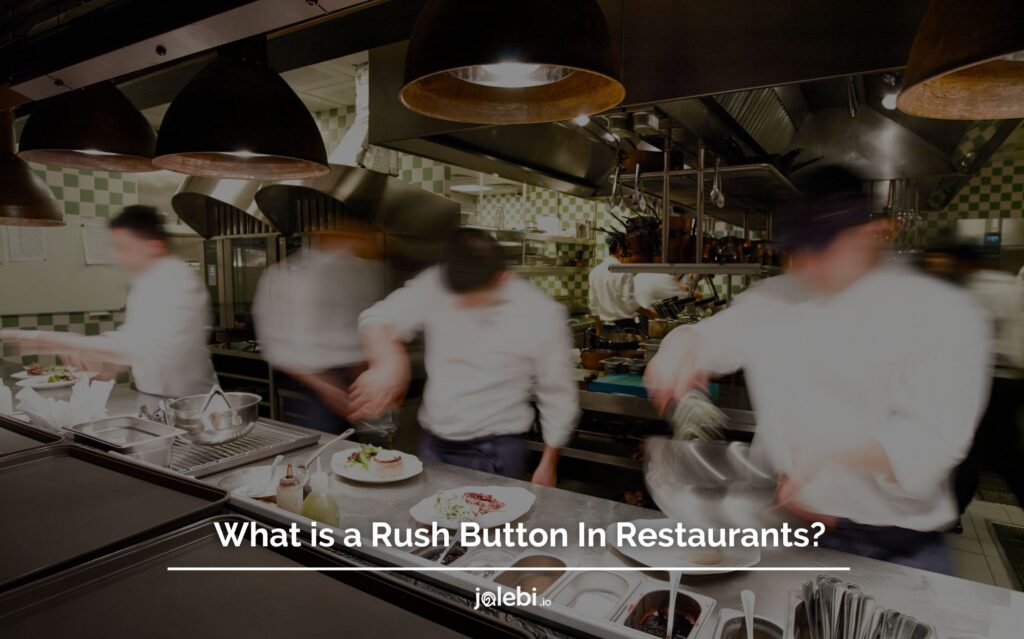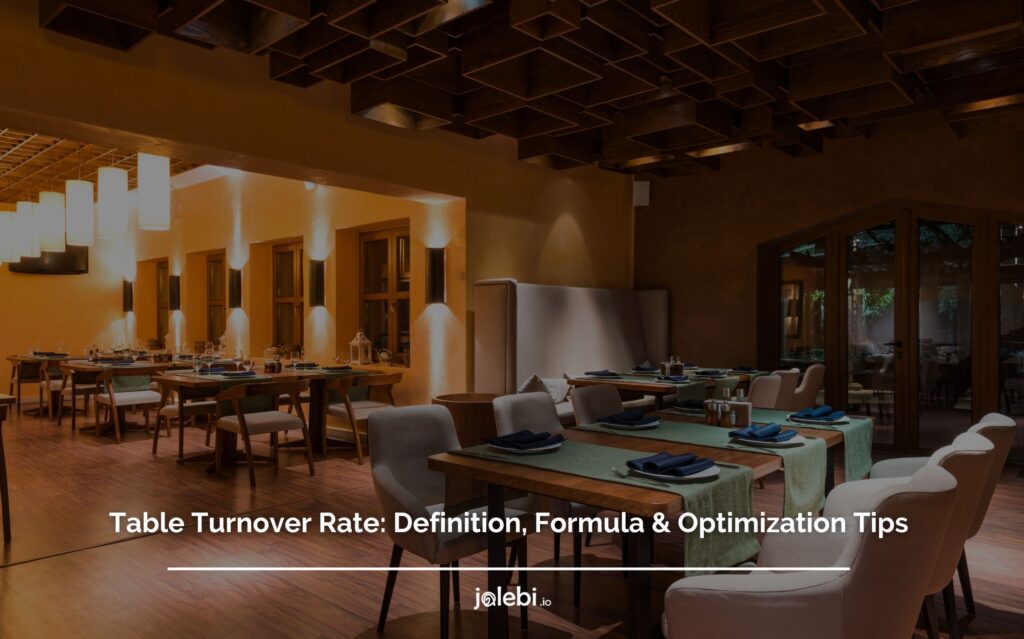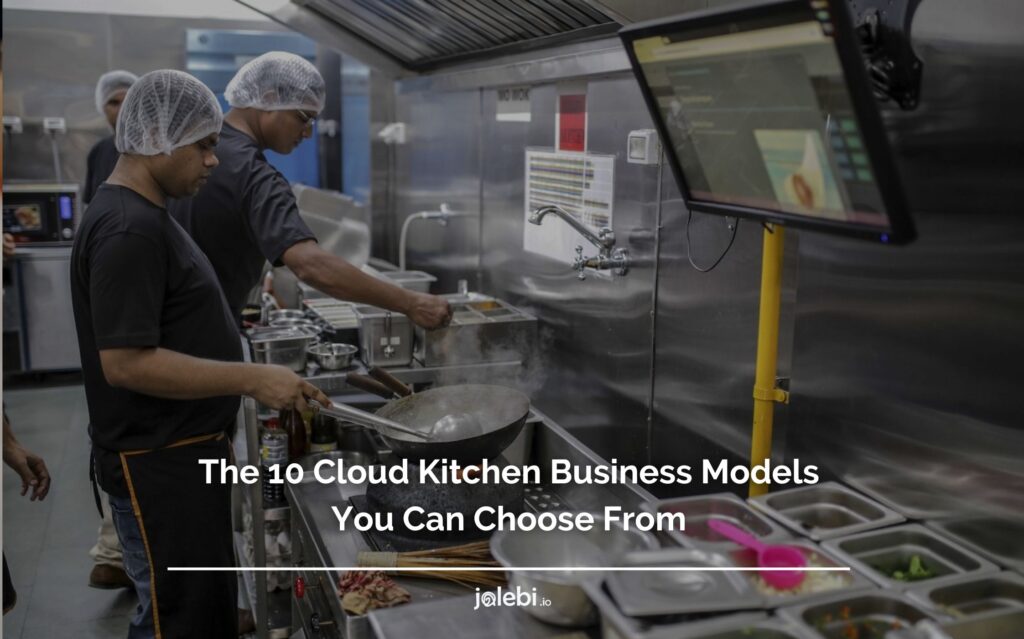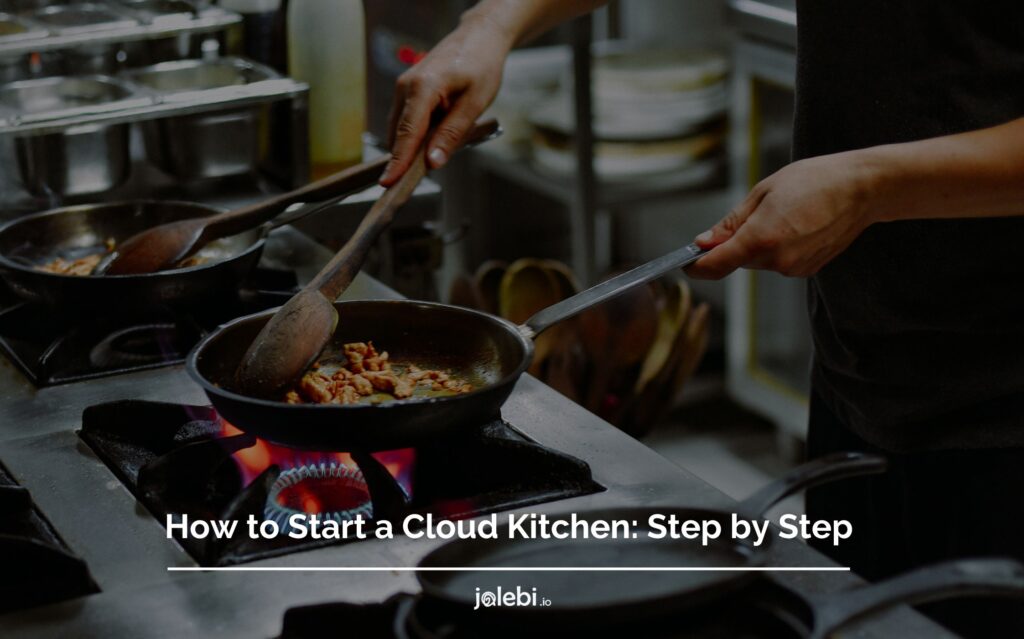Table of Contents
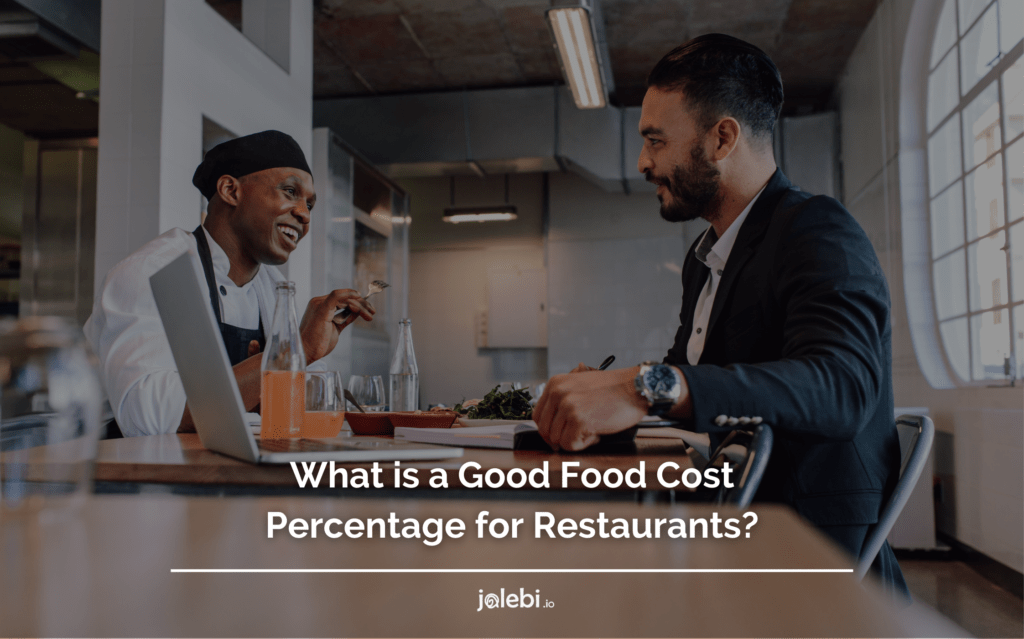
As a restaurant owner, you are always looking for ways to keep your costs down while still providing great food and service to your customers.
You know that keeping food costs low is one of the most important things you can do to maintain profitability.
However, the important question is concerning the authenticity of a good food percentage for restaurants.
And how can you keep your costs as low as possible without sacrificing quality or customer satisfaction?
Some general guidelines can help restaurateurs stay within desired parameters and make a profit.
In this post, we’ll answer the question of what is a good food cost calculation and share some tips on how to keep your costs in check.
What is restaurant food costing?
Restaurant food costing is a critical aspect of managing a restaurant business.
It involves determining the total cost required to prepare a dish, taking into account the price of each ingredient, and any associated expenses in the preparation process.
This understanding helps set menu prices, control expenses, and ultimately, drive profitability.
In the simplest terms, restaurant food costing is the sum of the costs of all the ingredients used in a dish.
For example, if you run an Italian restaurant, the restaurant food cost for a pasta dish would include the costs of the pasta, sauce, meat, vegetables, herbs, and any other ingredients used, as well as the cost of preparation.
However, restaurant food costing goes beyond just the cost of ingredients.
It can also include the overhead costs associated with preparing the dish, such as labor, utilities, and equipment depreciation.
This comprehensive view helps you understand the true cost of each dish and thereby price it appropriately to ensure a healthy profit margin.
On top of that, regularly reviewing and updating your restaurant food costing is crucial. Ingredient prices can fluctuate due to changes in market conditions, seasonal availability, or supply chain disruptions.
What is the Food Cost Percentage?
Before moving on to what is a good food percentage, it is essential to understand what food cost ratio is.
It is a key metric for any food service business. It represents the portion of each sale that goes toward food costs, and it can have a major impact on profitability.
A high percentage means that a greater portion of each sale is going towards ingredients, while a low percentage indicates that a smaller portion of each sale is being spent on food.
Businesses that keep a close eye on food cost calculations can ensure that they are operating as efficiently and profitably as possible.
4 Factors that determine food cost percentage
When it comes to determining food cost, several factors come into play. Here’s a list of factors that can help you understand the mindset better.
– The first, and perhaps most obvious, is the cost of the ingredients themselves. The more expensive the ingredients are, the higher the food cost percentage will be.
– The location also determines the food cost ratio. For example, if a restaurant is located in an expensive area, its food cost will be higher than a restaurant in a less expensive area.
– Similarly, if a restaurant has high overhead costs, such as rent or utilities, its food cost percentage will also be higher.
– Finally, the level of service offered can also affect the food cost percentage. A buffet-style restaurant will typically have a lower food cost percentage than a sit-down restaurant because less labor is required.
All of these factors must be taken into account when determining food cost percentage.
What is a good food cost percentage in a restaurant?
A good food cost percentage in a restaurant falls between 28 and 32 percent. Anything below 28 percent means that the restaurant is not making enough profit, while anything above 32 percent indicates that the restaurant is overspending on ingredients.
While 28 to 32 percent may seem like a small margin, it can make a big difference in a restaurant’s bottom line.
For example, if a restaurant has a 30 percent food cost, that means that for every $100 in sales, $30 is spent on ingredients.
If the aforementioned percentage increases to 35 percent, that same $100 in sales will only yield a profit of $15.
As such, even a small increase in food costs can have a major impact on a restaurant’s profitability.Consequently, restaurants need to understand what is the percentage of food cost in a restaurant and closely monitor their food cost percentage and take steps to keep it within a healthy range.
How to calculate food cost percentage?
There are many factors to consider when opening a restaurant, but one of the most important is food cost.
After all, no matter how delicious your food may be, if it’s priced too high, customers will simply go elsewhere.
Now that you know what is the percentage of food costs in a restaurant, it is important to understand how to calculate food cost percentage.
So how is food cost percentage calculated?
Figuring out food costs is paramount to the success of a business as it would help you gauge where your money is going.
Many restaurateurs use a food cost formula to calculate food cost percentages.
To do this, simply add up the cost of all the ingredients used to make a dish, then divide that amount by the selling price of the dish.
For example, if a dish costs $4 to make and is selling for $10, the food cost percentage would be 40%.
Food Cost Percentage = (Sum of cost of ingredients) / Selling price
While there are other factors to consider when setting menu prices, learning how to calculate food cost percentages is a good place to start.
By keeping your food cost low, you’ll be in a better position to attract and keep customers.
How To Determine Food Cost?
Did you know that 20% to 40% of an average restaurant is spent on food?
This is a large sum considering a restaurant has several other important expenses such as marketing, rent, utilities, etc.
This is why it is important for you to know how to determine food costs.
While we have gone through food cost formula above, you may also want to know how we get the values that we then put into the food cost formula and get our answer.
Let’s elaborate on all the information/values you need when it comes to figuring out food costs.
So we know: (COGS/revenue) x100 is the formula for food cost.
Let’s see how you can calculate the cost of goods sold:
COGS: [(Beginning Food and Beverage Inventory Value) + (Inventory Purchase Value)] – (Ending Inventory Value)
- Beginning food and beverage inventory value refers to how much your existing inventory cost at the beginning of the period.
- This is then added to inventory purchase value which is the cost of the inventory at the time of its purchase
- This is then followed by subtracting the ending inventory value which is the cost of the inventory when the time period ends.
Let’s take the example of a restaurant owner named Yousuf. He wants to find out the food cost for which he first has to determine the COGS.
His inventory was worth $1000 at the start of the month. He made an additional purchase of around $3000.
At the end of the period, the value of the inventory was $5000
So based on this: [($10,000) + ($3,000)] – $5,000 = $13,000 – $5,000 = $8,000
This means Yousuf’s cost of goods sold in this month was $8,000.
Now let’s move on to the revenue calculation. When figuring out the food cost, it is necessary to use the revenue of the period you are calculating the food cost for.
To determine the revenue, Yousuf needs to look at his point of sale system to find out how much money his restaurant made in the specific time period.
For example, his restaurant earned $23,000 in revenue in the month we are considering in this example. This would be his revenue.
On applying the food cost formula for food cost percentage, we get:
= ($8,000/$23,000) x100
= 34.78%
This is an elaborative example of how to figure food cost.
Now that you know how is food cost percentage calculated, let’s have a look at some easy tips to keep your food cost percentage in check.
8 Super easy tips to keep your food cost percentage in check
Any restaurateur will tell you that food cost is one of the most important aspects of running a successful business.
After all, if you’re spending too much on ingredients, it will be difficult to turn a profit.
Now that you know how to calculate food cost percentage and what is a good food cost percentage, it is essential to know how you can keep it in check. Here are a few tips to do so.
1. Track Inventory Consistently
One of the most effective ways to lower food costs is to track inventory carefully and consistently.
This can help you to avoid overstocking, which can lead to wasted products, and it can also help you to spot issues with shrinkage (i.e., a product that’s lost or stolen).
By tracking inventory consistently, you can make sure that you’re only ordering the amount of product that you need, which can save you a significant amount of money in the long run.
If you’ve ever worked in a restaurant, you know how frustrating it can be to run out of a popular dish because you didn’t realize you were low on an ingredient.
With jalebi.io’s restaurant management system, you can integrate your restaurant’s menu with the inventory and never run out of stock as the ingredients used in the recipe consistently update in the system according to consumption.
2. Leverage Market Information
In this day and age, there is no excuse for a restaurant owner not to be aware of what items are in season.
With a wealth of information readily available at our fingertips, there is no reason why we can’t be using this to our advantage when it comes to pricing menu items.
Not to mention, your customers will appreciate the efforts we make to source seasonal ingredients.
So, let’s commit to being more mindful of what’s in season and take advantage of market information to succeed and keep the food cost low.
3. Set the Right Prices
By comparing its prices to those of similar restaurants in the area, a restaurant can ensure that it is not charging too much or too little for its dishes.
Additionally, by regularly evaluating its menu prices and making adjustments as necessary, a restaurant can stay ahead of the competition and avoid losing business to rivals with lower prices.
In short, setting pricing competitively is an essential part of keeping a restaurant’s food cost percentage low and ensuring its financial success.
When it comes to setting prices for your food items, it’s important to have a good understanding of the competitive landscape. jalebi.io’s analytical reports can help you see how your prices compare to your competitors so that you can make adjustments accordingly.
4. Use the Weighted Average Method
As any restaurateur knows, food cost is a key factor in running a successful business.
The weighted average method is a common way to reduce food costs and improve profitability.
This method involves assigning a weight to each menu item based on its price and then averaging the prices of all the items to arrive at a final cost.
It can help identify areas where cost savings can be achieved.
For example, if the weighted average cost of a menu item is higher than the cost of its ingredients, this indicates that there may be room for improvement in the way the dish is prepared or served.
5. Switch Vendors
When looking to keep food costs low, it’s essential to regularly assess your current vendors and explore alternatives.
Reach out to different suppliers and negotiate better prices without compromising on the quality of ingredients.
Request competitive bids from various vendors to compare prices and services.
Building relationships with multiple vendors can give you more options and bargaining power.
Additionally, consider joining a local or regional buying group where multiple restaurants pool their purchasing needs to secure better deals from suppliers.
6. Decrease Portion Sizes
Reducing portion sizes requires a delicate balance to ensure customer satisfaction.
Start by analyzing which dishes have larger portions and where you can make slight adjustments without impacting the overall dining experience.
Consider using smaller plates and bowls to create the illusion of a satisfying portion.
Focus on presentation, as an artfully presented dish can leave customers feeling content even with a slightly smaller serving.
Alternatively, offer different portion size options on the menu, allowing customers to choose the portion that best suits their appetite and budget.
7. Lower the Commission Fees
Third-party delivery platforms can significantly impact your bottom line due to their commission fees.
To keep food costs low, negotiate with these platforms to secure lower commission rates, especially if your restaurant drives a high volume of orders.
Some platforms offer special deals for long-term partnerships or volume commitments.
Encourage customers to order directly from your restaurant’s website or app by offering exclusive discounts or promotions.
Implementing an in-house delivery system can also reduce dependency on third-party platforms and help control delivery-related costs.
8. Partner with Other Restaurants
Collaborating with other restaurants to make joint purchases can lead to substantial savings.
Identify local restaurants or establishments with similar ingredient needs and buying habits and discuss the possibility of pooling resources to buy in bulk.
However, ensure that the partnering restaurants have comparable quality standards and menu requirements to maintain consistency in the ingredients purchased.
Leverage jalebi.io to Maintain Optimal Food Cost Percentage
If you’re looking for a way to optimize your food cost percentage, jalebi.io’s restaurant management system is a great option.
With jalebi.io, you can track your inventory, sales, and menus in one place, so you always know what’s going in and out of your kitchen.
This information can be invaluable in helping you to adjust your recipes and menu items to ensure that you’re getting the most bang for your buck.
In addition, jalebi.io provides detailed reports on your food cost percentage, so you can see exactly where you’re losing money and make changes accordingly.
With jalebi.io’s restaurant management system, you can take the guesswork out of managing your food cost percentage and make sure that you’re always operating at peak efficiency.
Contact us today to learn more about how jalebi.io can help your business!
What is meant by estimated food costs?
Estimated food costs can vary widely depending on various factors, including the type of restaurant, cuisine, location, and the specific menu items offered. However, to provide a general guideline, here’s a rough estimate of food costs as a percentage of a restaurant’s revenue:
1. Fine Dining Restaurants: Food costs may range from 28% to 35% of revenue.
2. Casual Dining Restaurants: Food costs may range from 30% to 40% of revenue.
3. Fast Food or Quick-Service Restaurants: Food costs may be around 25% to 35% of revenue.
It’s important to note that these are rough estimates, and the actual food costs can vary significantly based on the restaurant’s business model, pricing strategy, and efficiency in managing inventory and procurement. Accurate food cost management is crucial for maintaining profitability in the restaurant industry.
FAQs
1. How is the food cost percentage calculated?
Here’s a quick overview of how is the food cost ratio calculated.
The food cost calculation formula is as follows:
Food Cost Percentage Formula = (Cost of Goods Sold/Revenue) x100
In the food cost calculation formula, the COGS refers to the amount of money spent on purchasing the inventory that goes into making the meals on the menu and the revenue refers to the cash that flows in as a result of the sales or in simple terms you can consider it the price of the items on the menu.
Dividing the two values and then multiplying them by 100 is how the food cost ratio is calculated.
So now that you know how is the food cost ratio calculated, here are the different levels at which it can be done:
- The restaurant as a whole
- Different categories of food
- Specific dishes on the menu
2. What is the ideal food cost ratio?
When it comes to running a restaurant successfully, most restaurants aim for an ideal food cost percentage of 28% to 35%.
While this might be a benchmark value that you want to consider, it is important to know that there is no ideal food cost ratio.
This is because the ideal food cost may vary based on several factors such as the overhead costs of the restaurant as well as the other operating expenses.
For restaurants that believe there is an average food cost ratio that they aim to achieve, it is significant to mention that there is no such thing exists.
An ideal food cost depends on what you are serving, the market that you are serving as well as the cost control of food.
So to sum it up, when someone asks you what should food costs be in a restaurant ideally, the straightforward answer is that it should be around 28% to 35% of the total sales.
However, it is not a concrete figure that you must achieve to be successful in the food business.
So while the answer to what should food costs be in a restaurant has an approximate answer, it depends on several factors such as the overhead and operating expenses.
3. What’s the profit margin for restaurants?
The average profit margin for a restaurant that is full-service is around 3%-5%. On the other hand, the average profit margin for a quick-service restaurant is around 6%-9%.
If you are in the catering services, the average profit margin for your business would be around 7%-8%
Moreover, if you decide to start a food truck, you can expect a profit margin of 6%-9% on average.
4. What is the average cost of a restaurant meal?
The average cost of a restaurant meal can vary significantly depending on the type of restaurant, location, and cuisine. In the United States, for example, a casual dining restaurant might offer meals ranging from $10 to $30 per person, while fine dining establishments can exceed $100 per person.
Fast food or quick-service restaurants generally have lower average meal costs, typically ranging from $5 to $10 per person. Keep in mind that prices can vary worldwide, so it’s essential to consider the specific location and type of restaurant when estimating the average cost of a meal.
5. Why food costing and pricing is important?
Food costing and pricing are essential in the restaurant industry for several reasons. Firstly, they directly impact a restaurant’s profitability. By accurately calculating the cost of ingredients and understanding the portion of revenue allocated to food costs, restaurants can set prices that not only cover expenses but also generate a profit.
Secondly, proper food costing helps in cost control and waste reduction. It allows restaurants to identify inefficiencies in purchasing, portion control, and menu items that may not be profitable.
Also, it helps maintain consistency in quality and portion sizes, which is crucial for customer satisfaction and loyalty.
Ultimately, effective food costing and pricing strategies ensure that a restaurant remains financially viable while delivering value to its customers, making it a fundamental practice in the industry.
6. What is food cost?
Food cost refers to the expense incurred by a restaurant or food service establishment in purchasing the ingredients and raw materials required to prepare the dishes on their menu. This cost includes the price of all food items, spices, condiments, and any other materials used in the preparation of meals.
Food cost is a significant factor in a restaurant’s overall financial management, as it directly affects profitability. By accurately calculating food costs and managing them effectively, restaurants can set appropriate menu prices, control expenses, and maximize their profit margins.
Read more:




